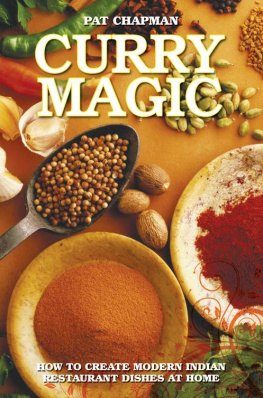

Published by American Palate
A Division of The History Press
Charleston, SC 29403
www.historypress.net
Copyright 2013 by Robin Chapman
All rights reserved
First published 2013
e-book edition 2013
Manufactured in the United States
ISBN 978.1.61423.922.2
Library of Congress CIP data applied for.
print edition ISBN 978.1.60949.795.8
Notice: The information in this book is true and complete to the best of our knowledge. It is offered without guarantee on the part of the author or The History Press. The author and The History Press disclaim all liability in connection with the use of this book.
All rights reserved. No part of this book may be reproduced or transmitted in any form whatsoever without prior written permission from the publisher except in the case of brief quotations embodied in critical articles and reviews.
For
Marlene Maselli Schuessler,
an inspiring Santa Clara Valley teacher
Contents
INTRODUCTION
A House in the Orchard
I loved looking at the ripe apricots on the trees and trying to pick out just the right one that would be perfect for eating. I imagined how each one would taste. It was like a treasure hunt.
Gene Chalupa Venell
In my memory, the warm summer days in the Santa Clara Valley have an apricot hue. The hillsides around the valley in summer are a soft shade of adobe, brightened by the apricot color of the California poppies scattered within a sea of Spanish oats. The sun in the summer afternoons is a shade of apricot too, and when the apricots ripen on the trees, they join this symphony of color.
On our street in Los Altos, the apricots were ready for harvest near the Fourth of July. They were ripe for less than three weeks. They were free for the taking on hundreds of trees. They were beautiful to look at and tasted even better than candy. What child would not be enchanted?
For those few weeks, we ate our fill and never got sick of them. Our mothers canned them, baked pies and made apricot jam. We helped our fathers cut them, place them on trays, smoke them with sulfur and set them out in the sun to dry.
My sister and I grew up in a neighborhood that bloomed in the middle of an apricot orchard in a valley that, when we were small, was still filled with hundreds of thousands of acres of fruit orchards. Of all the plentiful produce around us, the apricot was, to us, the most memorable.

It is a hot day in June, and my father is wearing his swimming trunks (and an eccentric hat we bought in Mexico) as he thins the apricots on our backyard trees. The crop is so big hes had to prop up the overloaded branches. If you dont thin a crop this heavy, the cots will be too small and not very sweet. Chapman family collection.
Perhaps it seemed that way because the apricots season was so briefmaking the apricot rare, like all great loves. Perhaps we loved them for the warmth they gathered from the sun or for the cool shade of their leaves.
Most likely it was their taste.
Picked warm from a tree, an apricot opens into two bite-sized halves as easily as if it has a dotted line down the middle. The seed at its center infuses the core with a hint of almond: in some parts of the world, the oil of the apricot seed is used instead of almond as a flavoring. The fruit of the apricot carries the scent of citrus and jasmine, peach, gardenia, honeysuckle and cardamom. When you pop one into your mouth, the taste is rich, sweet and a little bit tart. Filled with antioxidants, beta-carotene, vitamin C, potassium, iron, vitamin A, copper, fiber and lycopene, each apricot contains just sixteen calories.
Not that we were counting.
It was only when we grew up and moved away and tried to find them again that we realized how exotic and how scarce these apricots were everywhere else we lived. How lucky we were to have enjoyed them in such abundance!
Neither of my parents came from an orchard family, and neither was from California. Like most people who love the state, they came from somewhere else.
My father was from Homewood, Alabama, where his father worked in the advertising business and hardly ever removed his tie. My mother was from Spokane, Washington, where her father was a sheriffs deputy. They met when Captain William Ashley Chapman, serving along with millions of other men in World War II, was stationed at Geiger Field, near my mothers hometown.
They knew each other for just six weeks when they married. They were together for six more weeks before my father headed overseas for the last and greatest battle of the war in the Pacificthe Battle of Okinawa.
Reunited, they came to the Santa Clara Valley in 1947 when my father, an engineer, took a job at Ames Aeronautical Research Laboratory at Moffett Field. Ames was a branch of the National Advisory Committee for Aeronautics, a federal agency that later morphed into NASA. It was one of the first places in Santa Clara County to explore the new technologies that would one day transform the area into Silicon Valley. Ames was built on the site of what once had been orchards and bean fields.
At first, my parents lived in Palo Alto, the nearest city of any size to Moffett Field that had housing for themand there wasnt much housing available even there. Next to nothing had been built for civilians during World War II, so all the returning veterans found housing a challenge.
My parents took what they could finda rented room in a little house on Palo Altos Emerson Street that my mother dubbed Denmans Dump. If that seemed cramped, things got even tighter when my sister arrived that autumn. My mother hoped they could one day buy a house in Palo Alto. My father, it turned out, had other ideas.
All during the last year of the war, in the midst of nightly air raids, kamikaze attacks and anti-aircraft guns booming around him on the little island of Ie Shima, he spent his free time building a house on paper. He sketched in his pyramidal tent as he worked twelve-hour shifts as commander of C Company, 1902 Engineer Aviation Battalion, United States Army Corps of Engineers. As the war wound down, he wrote my mother:
Friday, 15 June, 1945
Ie Shima
We are pretty busy these days but if we ever get any regular time off I intend to play around with our house some more.
Dad was constructing runways, aid stations, water plants and chow halls under fire. After that experience, he figured it couldnt be so very difficult to build his own house after the war was over:
Saturday, 16 June 1945
Ie Shima
You speak of us buying a house. I wouldnt buy someone elses house or one that someone else had built unless it was pretty cheaply priced. I dont believe wed ever be satisfied unless we planned exactly what we wanted.
When he got home, he began to plan what he and his family would need. My mother, never much of a risk-taker, wasnt so sure. She may not have liked Denmans Dump, but she liked Palo Alto. Home to Stanford University, its lovely old homes were large and its neighborhoods neat with sidewalks and mature shade trees. Unfortunately, these same features meant fewer houses to choose from and higher prices.
The prices may have made the difference. In the winter of 1947, my mother gave in, and the Chapmans bought a set of house plans and a lot in an apricot orchard in Los Altos.
Next page












